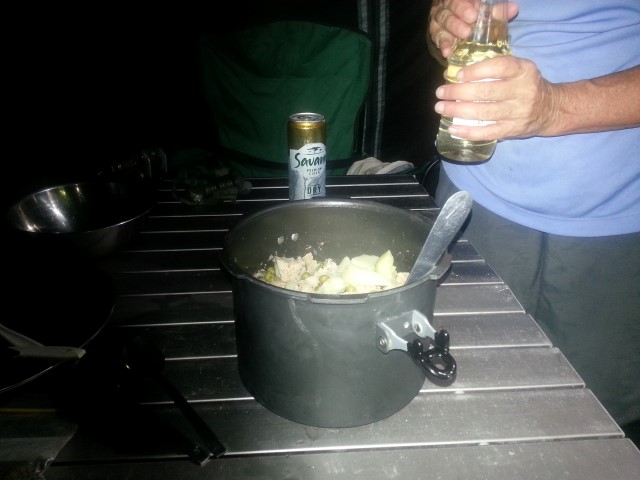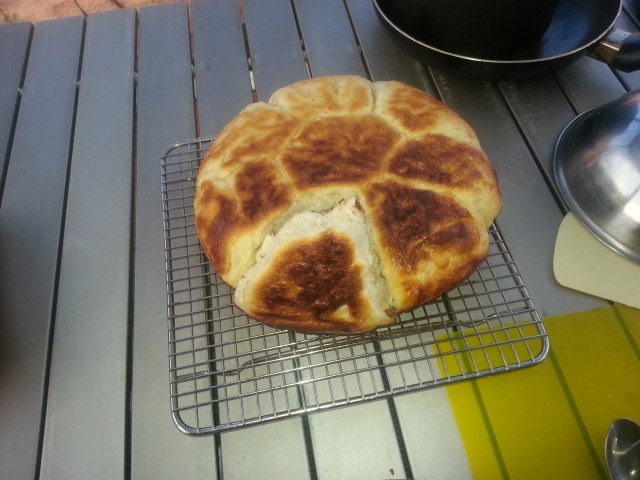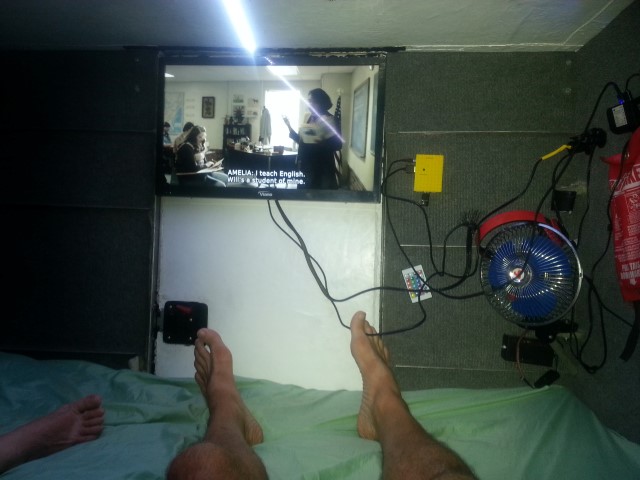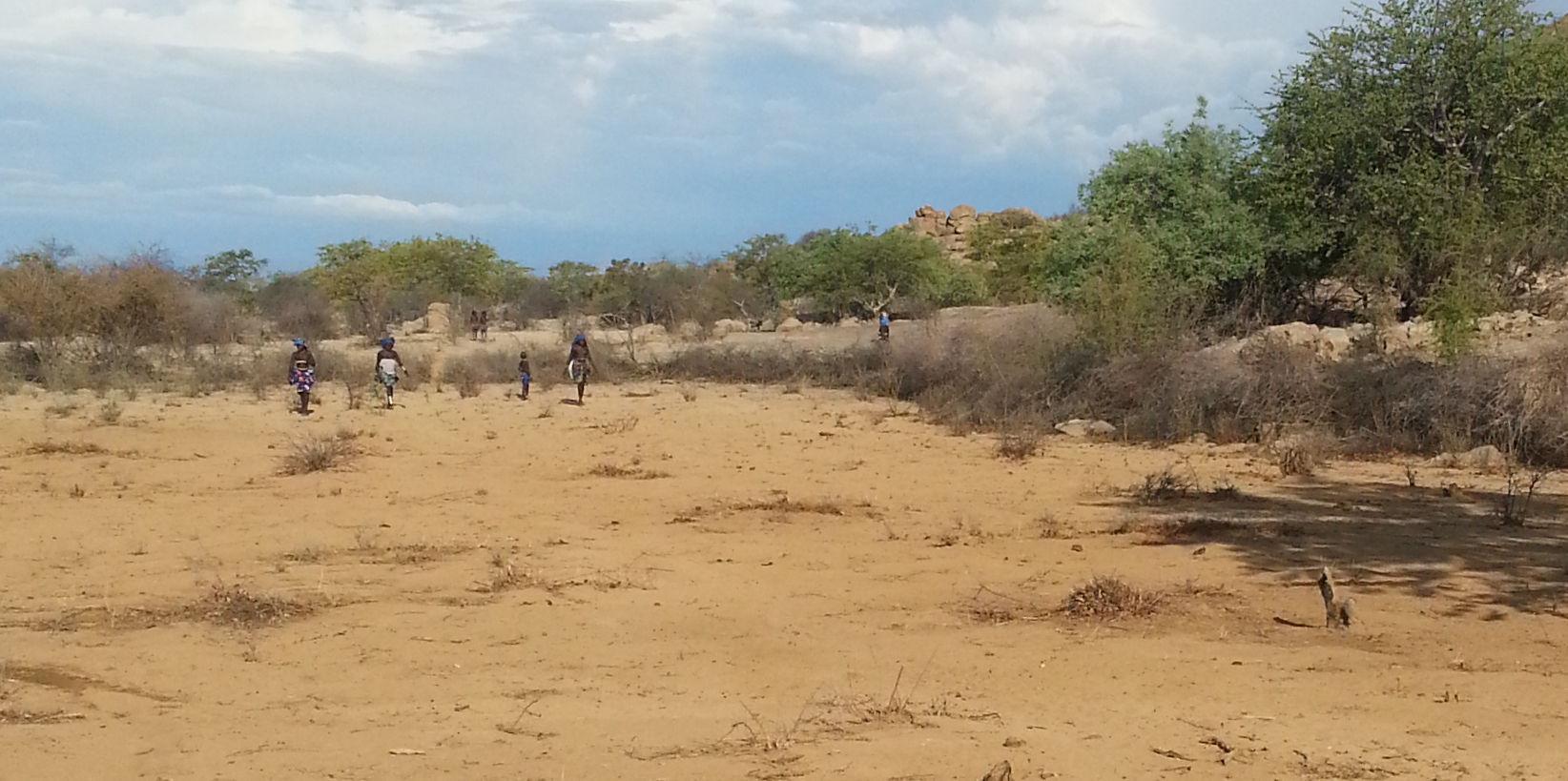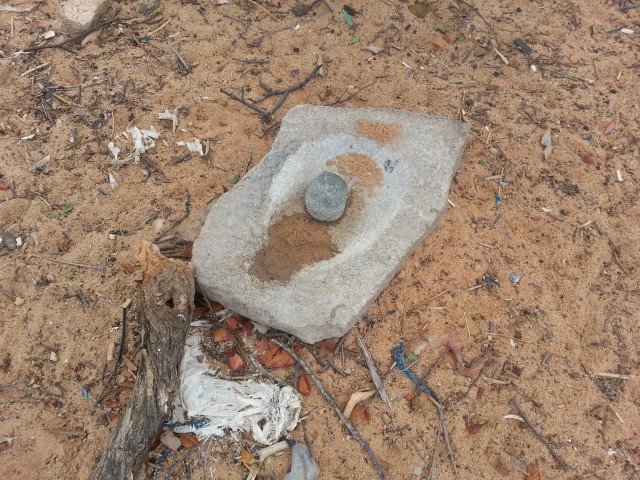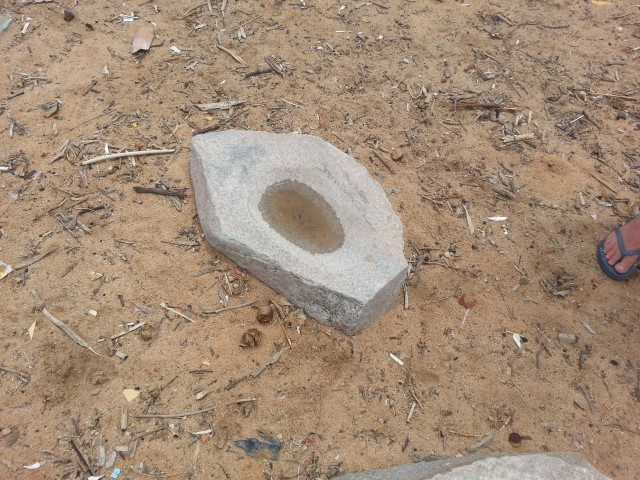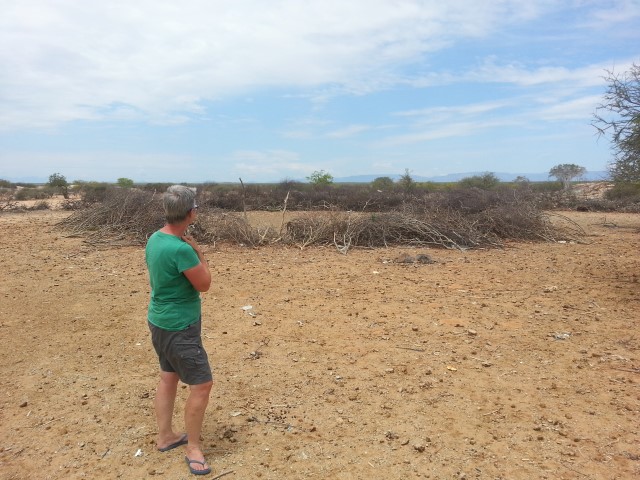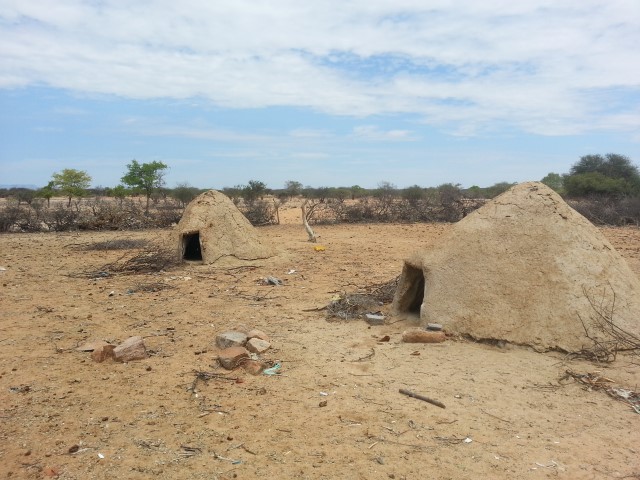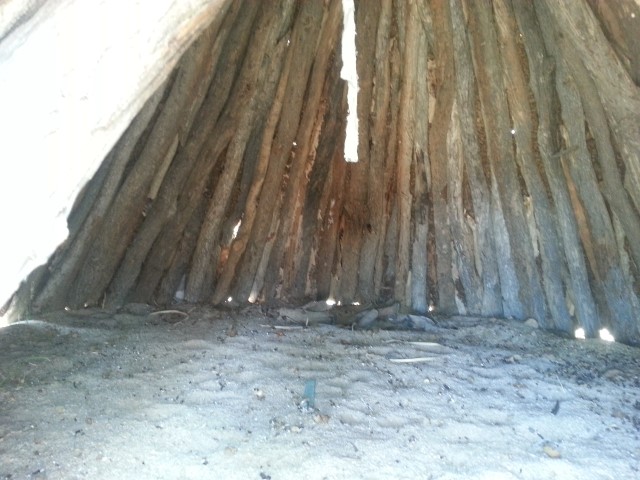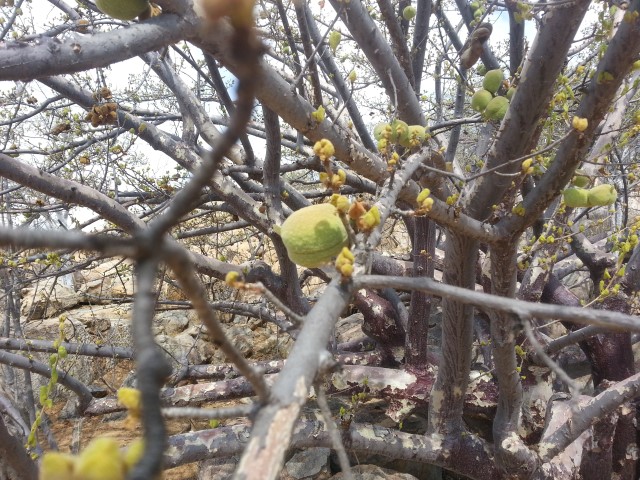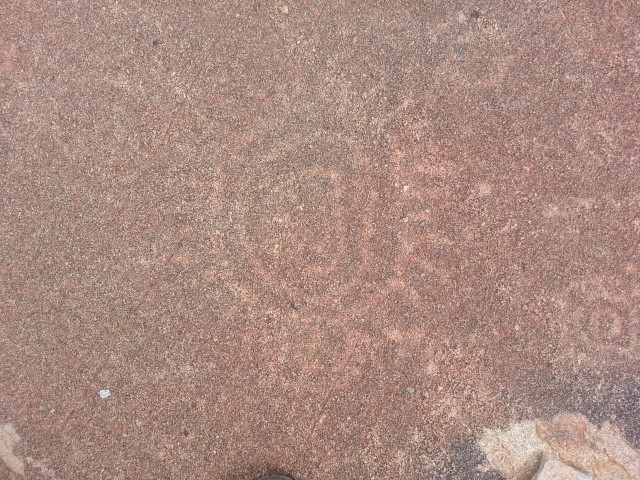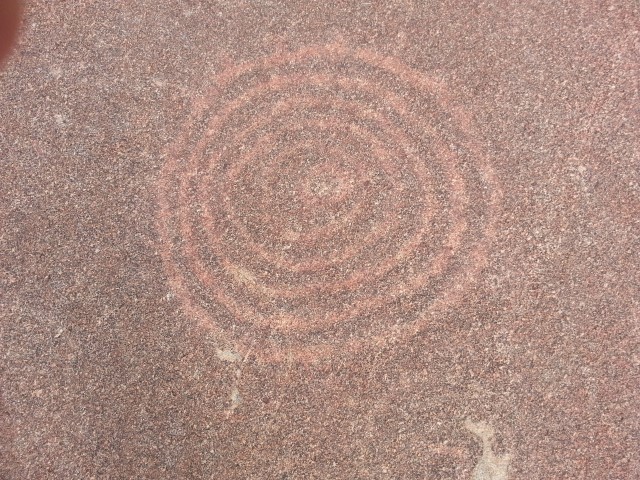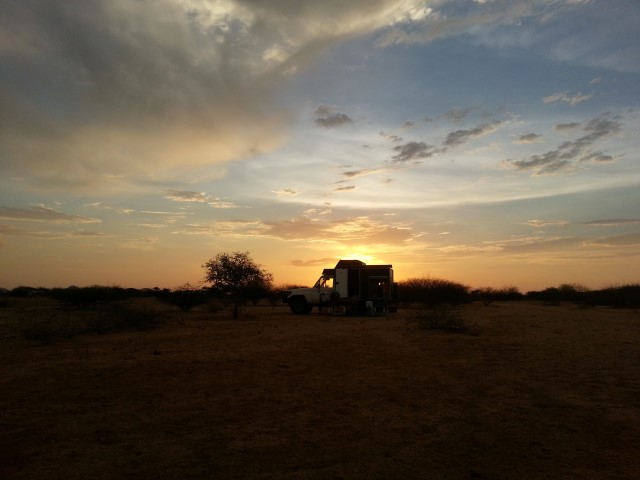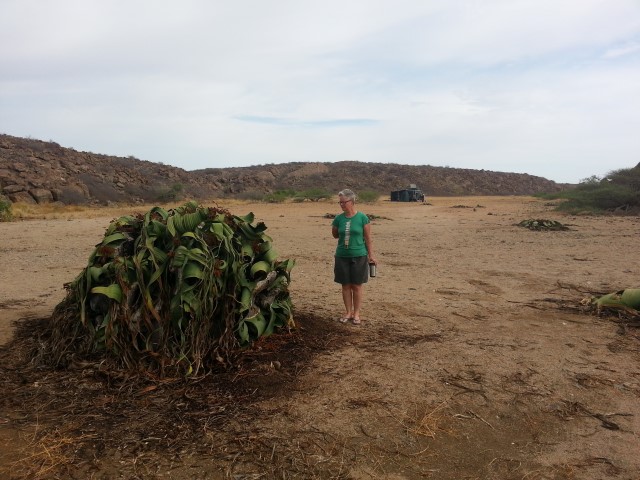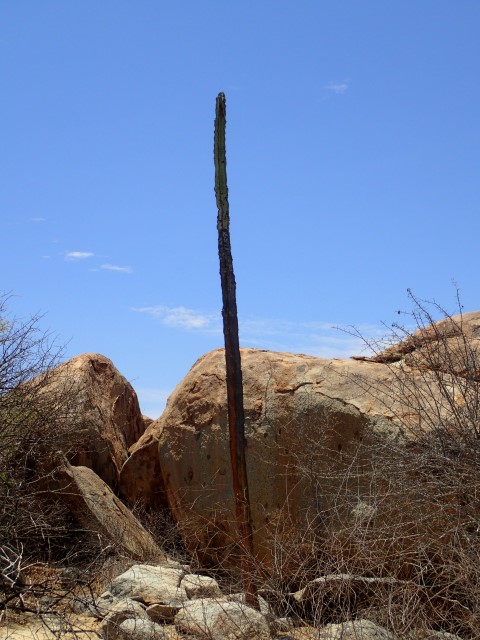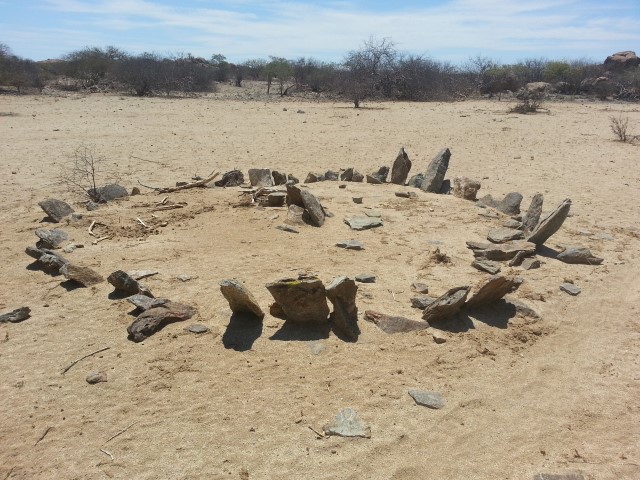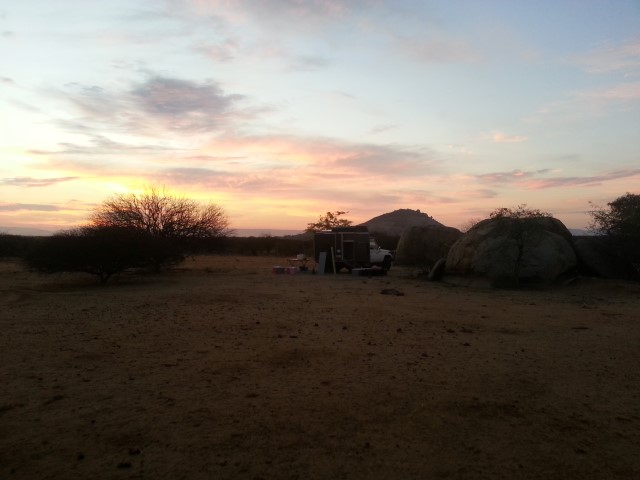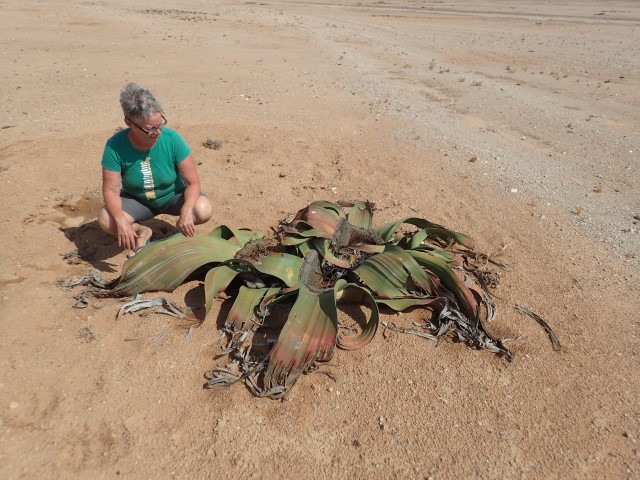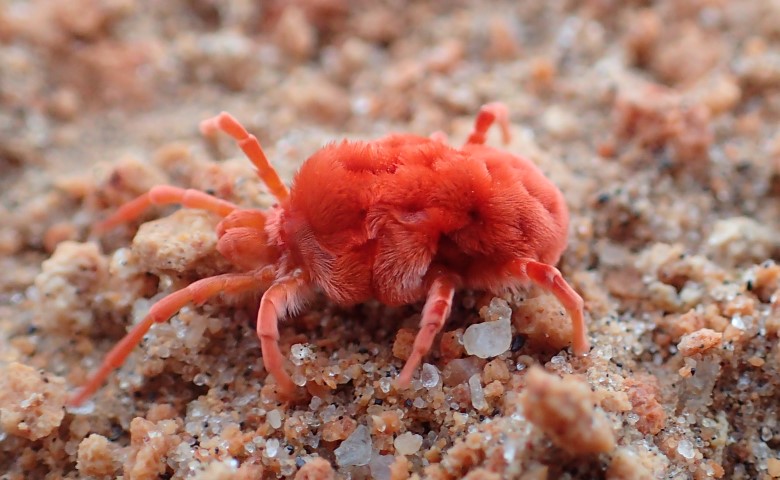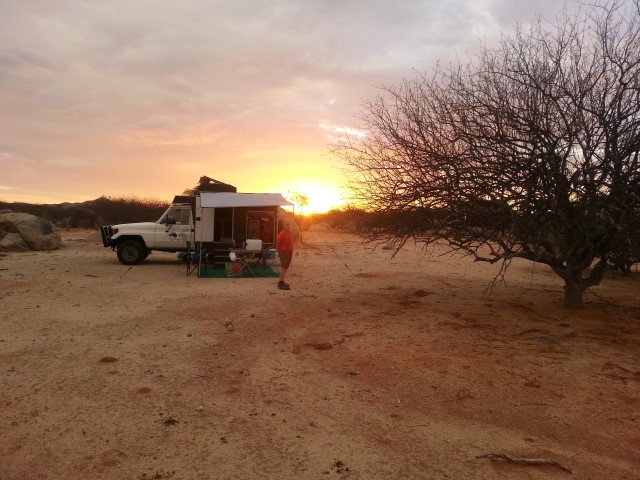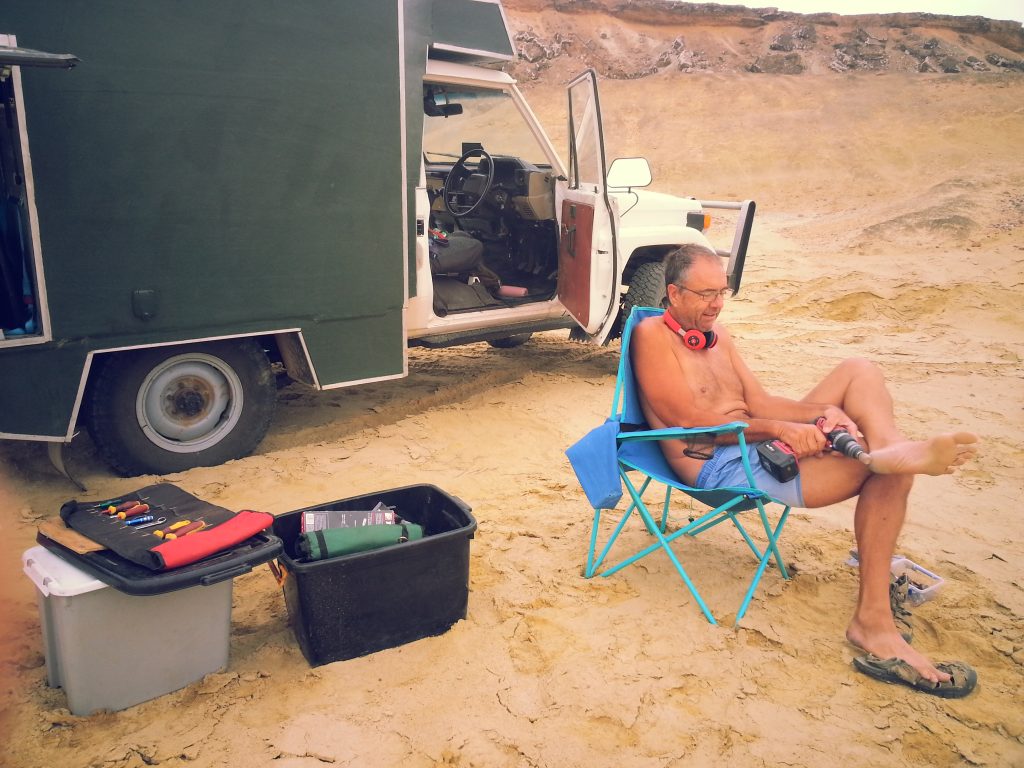One of our friends – hi Grant! – asked what our ‘go-to’ quick dinner is when we are setting up camp late at night. I replied that we always aim to be off the road well before dark, and if we haven’t reached our destination we just find somewhere suitable off the road and camp there. It did get me to thinking that I don’t write much about day-to-day stuff and what we eat. It is all just everyday life to us, but maybe it might be interesting.
We use a single-burner gas stove that takes disposable butane gas cartridges. Those cartridges cost less than AUD$2 at home, here we have paid up to AUD$5 for them. They usually last 2 or 3 days though and we bought enough in South Africa & Namibia to last us for this trip. We haven’t found any here in Angola, although I’ve seen the gas stoves in the local Shoprite supermarkets. I cook with a frypan, pressure cooker and use a small kettle for heating water. I love drinking black coffee and have worked out a good routine where I boil water in the evening, keep it in a thermos overnight and by the time I’m ready to drink my first (and usually only) coffee of the day, it’s the perfect temperature, and I don’t have to fuss about getting the stove out and heating up water in the morning.
I could write a whole blog post about how much I love our camping pressure cooker. Maybe I have in a previous blog, I can’t remember. We use a pressure cooker at home a lot, and prior to a previous camping trip – one of the European trips a couple of years ago I think – I got to thinking about how good it would be to take a pressure cooker with us, to save on gas and cooking times. I would have happily taken the 6L manual one that now sits on a shelf unused because we have a fancy electric one, but Greg found a Korean camping ‘rice cooker’ on Ebay. It’s a lightweight 3L manual pressure cooker and it is perfect for us. I also use it as an ordinary cooking pot occasionally, but a lot of the camp cooking I do now is done under pressure.
We have a hot meal every night. I love cooking while we’re camping, I love the challenge of making something tasty using minimal equipment, limited ingredients and in a short space of time – 30 minutes prep + cooking time. The foods that take the longest to cook are barley & potatoes- 10 minutes each. The stews I cook take about 12 minutes and barley risotto takes about 15 minutes.
Somehow everything tastes better when you’re in the middle of nowhere. As the saying goes – hunger is the best spice.
I started making a list of the meals we’ve eaten recently
Breakfast
Barley with tinned apple or other fruit- Greg
Muesli with home-made yoghurt – me
Lunch
Usually bread, baguettes or rolls, sometimes wraps, with ham & cheese or jam
Occasionally – frying pan pizzas with wraps, Mrs Ball’s fruit chutney, cheese, pineapple, ham
Dinner
Barley risotto with garlic, onions, chicken, cauliflower, carrot, broccoli
Cous cous as above
Stews – pork or chicken, lentils, potatoes, onions, garlic, cabbage, carrot or other veg, tomato paste
Pasta – tortellini with cream sauce – garlic, onions, bacon, cream thickened with cornflour
Pasta – dry pasta with canned tomatoes, tuna, feta
Steak, potatoes, frozen peas
Veal steak ( + deglazed pan juices with cider), potatoes
White chili – chicken, cannelini beans, onions, garlic, spices
Sausage & lentils
Pasta with sausage bolognese – take sausage meat out of skins, add onions, garlic, tinned tomatoes
Frittata with leftover cooked vegies
Yesterday was Shrove Tuesday so I made pancakes and as we’re having a ‘rest day’ today and staying here, just north of Bentiaba, for a second night, I mixed up a batch of yeasted dough and made pan-fried not-quite-naan breads
We keep small quantities of onions, garlic, potatoes, carrots, apples and bananas but not much other fresh fruit or veg as they don’t travel well. I cook with dried lentils and canned beans. At home I cook with dried beans but they take too much gas to cook when camping. I have a few basics that I add to our meals – onion salt and dehydrated raw vegetable stock powder that I make at home, plus mixed herbs, mild curry powder and ‘chicken spice’ that looks like it’s mainly paprika. I bought little cardboard boxes of the last 3 at Food Lover’s in Cape Town.
And finally, moving away from food and cooking, a confession.
We packed a 24inch TV in Clancy when we shipped him and sometimes watch TV shows at night. We convert Clancy’s dining room into our bedroom, hang to TV on the mounting bracket inside the door and watch an episode of a TV series Greg has downloaded. So far we’ve watched and enjoyed all of Russian Doll, and we’ve just started on Series 3 of True Detective.
